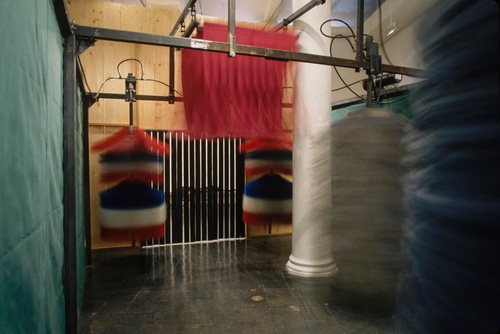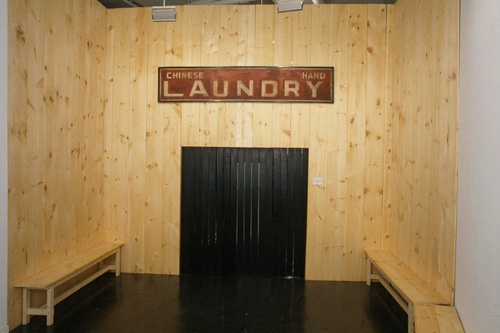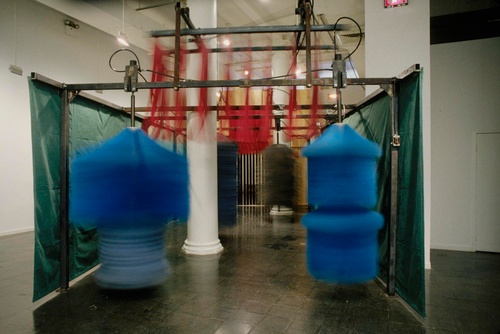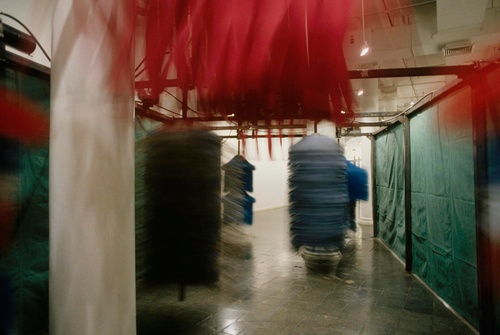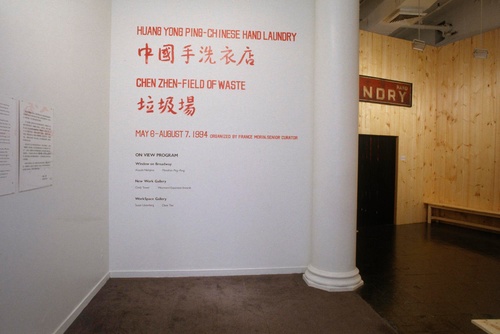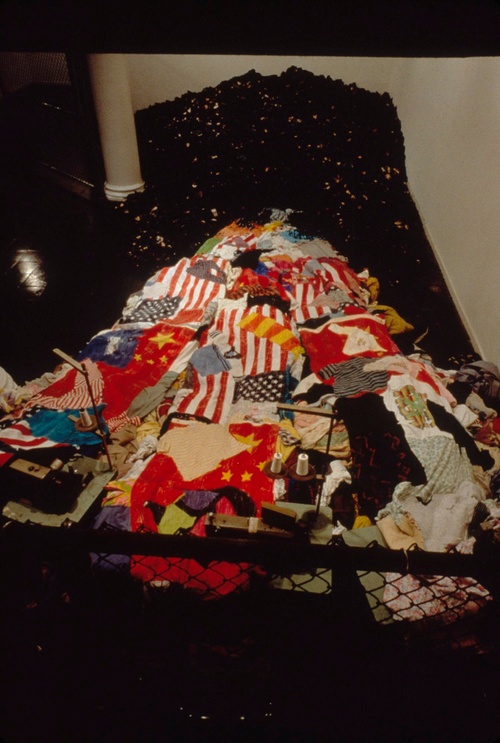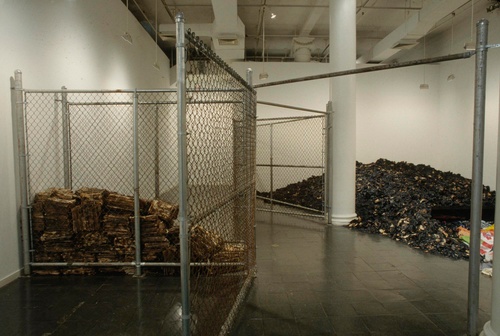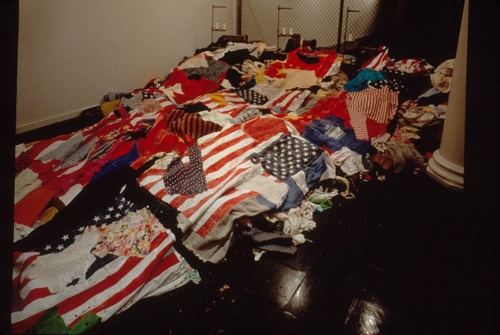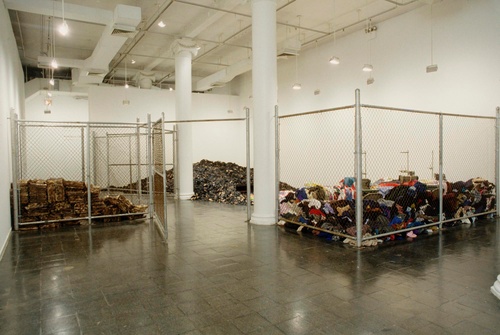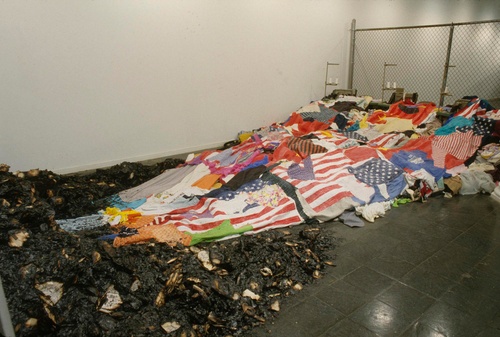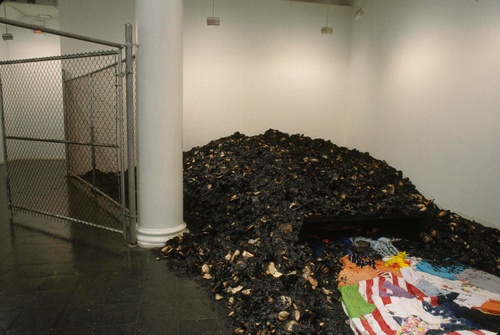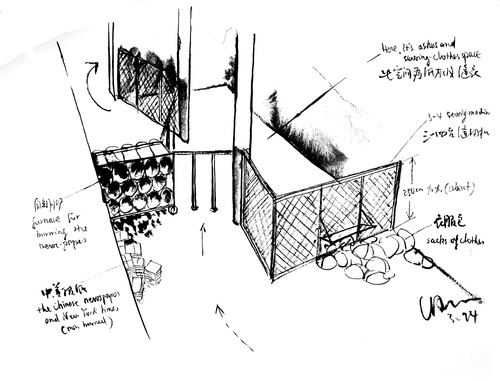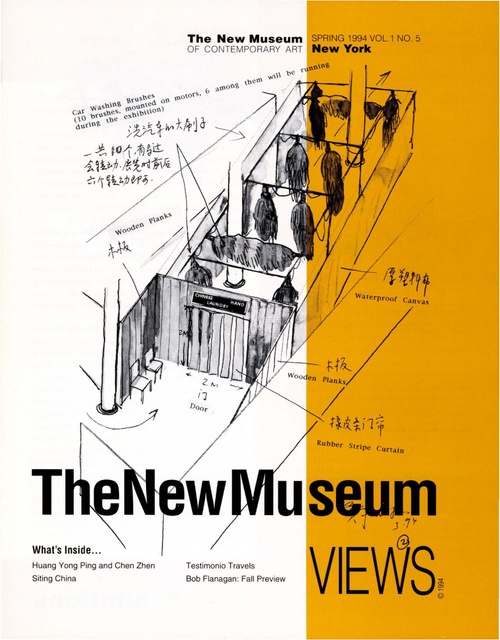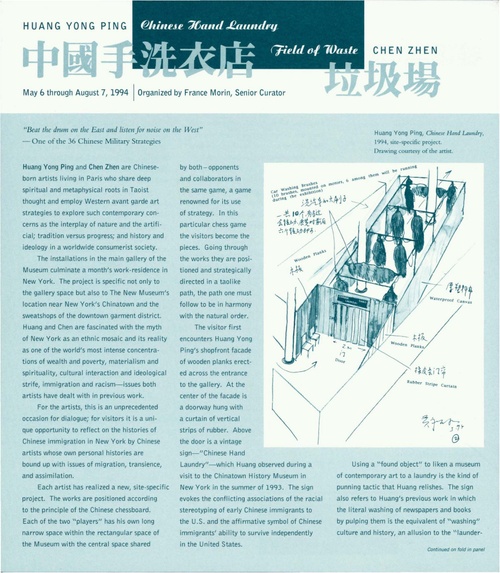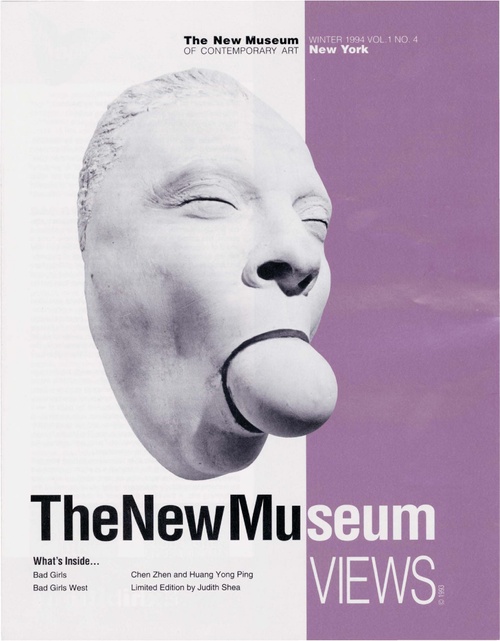Huang Yong Ping: Chinese Hand Laundry and Chen Zhen: Field of Waste
Huang Yong Ping: Chinese Hand Laundry and Chen Zhen: Field of Waste
Huang Yong Ping and Chen Zhen are Chinese-born aritsts living in Paris who share deep spiritual and metphysical roots in Taoist thought and employ Western avant garde art strategies to explore such contemorary concerns as the interplay of nature and the artifiical; tradition versus progress; and history and ideology in worldwide consumerist society.
The installations in the main gallery of the Museum culminated a month’s work-residence in New York. The project was specific not only to the gallery space but also to the New Museum’s location near New York’s Chinatown and the sweatshops of the downtown garment district. Huang and Chen were fascinated with the myth of New York as an ethnic mosaic and its reality as one of the world’s most intense concentrations of wealth and poverty, materialism and spirituality, cultural interaciton and ideological strife, immigration and racism–issues both artists have dealt with in previous work.
For the artists, this was an unprecedented occasion for dialogue; for visitors it was a unique opportunity to reflect on the histories of Chinese immigration in New York by Chinese artists whose own personal histories are bound up with issues of migration, transience, and assimilation.
Each artist realized a new, site-specific project. The works were positioned according to the principle of the Chinese chessboard. Each of the two ‘players’ had his own long narrow space within the rectangular space of the Museum with the central space shared by both–opponents and collaborators in the same game, a game renowned for its use of strategy. In this particular chess game the visitors became the pieces. Going through the works they are positioned and strategically directed in a taolike path, the path one must follow to be in harmony with the natural order.
The visitor first encountered Huang Yong Ping’s shopfront facade of wooden planks erected across the entrance to the gallery. At the center of the facade was a doorway hung with a curtain of vertical strips of rubber. Above the door was a vintage sign – “Chinese Hand Laundry” – which Huang observed during a visit to the Chinatown History Museum in New York in the summer of 1993. The sign evoked the conflicting association of the racial stereotyping of early Chinese immigrants to the U.S. and the affirmative symbol of Chinese immigrants’ ability to survive independently in the United States.
Using a ‘found object’ to liken a museum of contemporary art to a laundry is the kind of punning tactic that Huang relishes. The sign also referred to Huang’s previous work in which the literal washing of newspapers and books by pulping them was the equivalent of ‘washing’ culture and history, an allusion to the ‘laundering’ of colonial and immigrant histories by institutional spaces like museums, but a device which was also rooted in the Taoist notion that art is transient while human life is eternal.
Passing through the doorway, however, the visitor was in for a surprise. This ‘Chinese Hand Laundry’ fulfulled the Chinese proverb of ‘selling dog meat under the sign of a sheep’s head’ – that is, a case of deceptuve advertising. Behind the curtain strips, the visitor entered an automatic car wash–a canvas-sided, 30-foot-long tunnel to be negotiated past motorized brushes turning overhead and on both sides. Instead of seeing things washed by hand, visitors found themselves being ‘washed’ by machinery. Confined in the narrow space, the viewer was forced to dodge the huge, spinning nylon brushes, trapped within an alien disorienting environment, propelled by will not their own.
The ‘cleansed’ visitor left Huang Yong Ping’s environment only to find him/herself confronting the prisonlike steel barrier of Chen Zhen's Field of Waste. To one side were bundled New York newspapers in English and Chinese while, in the opposite corner, were heaped sacks stuffed with assorted items of clothing reminiscent of immigrants’ belongings. Passing through a gateway in the steel fence, the visitor encountered an arresting vista. From three sewing machines stretched trains of fabric forming a multicolored carpet which disappeared into a veritable mountain of ash at the far end of the gallery. On closer inspection, the fabric was seen to be a roughly-stitched melange of thousands of articles of clothing of all kinds, interwoven with Chinese and U.S. flags. The material was gathered by Chen during his month in New York–two tons of newspapers and five cubic meters of clothing.
For the artist, China and the U.S. represent the most radical opposition in terms of culture, tradition, political economy, and technological development. The juxtaposition of these two–through the metaphor of the fabric patchwork–was representative of the new world order. Chen juxtaposed and combined two processes to produce a field of symbiotic and coexisting identities–the recurrent destructiveness and consequent renewal through revolution in Chinese history (burning) and the means by which hundreds of thousands of Chinese immigrants have managed to survive abroad (manufacturing clothing). The work enshrined an ancient holistic view of reality in which matter and spirit, ‘nature,’ humankind, and manufactured objects exist in a constantly recycling continuum. Indeed, in Taoist thought, burning and the resultant ashes are noth symbolic of death, as they are in the West, but of purification and transformation.
From the moment the visitor first stepped into the Chinese Hand Laundry to the final contemplation of the Field of Waste, the viewer encountered two basic elements of transformtion–water and fire–and like the material in the installation itself, was recycled, processed, and transformed. 1
Huang Yong Ping
Chen Zhen
France Morin, Senior Curator
